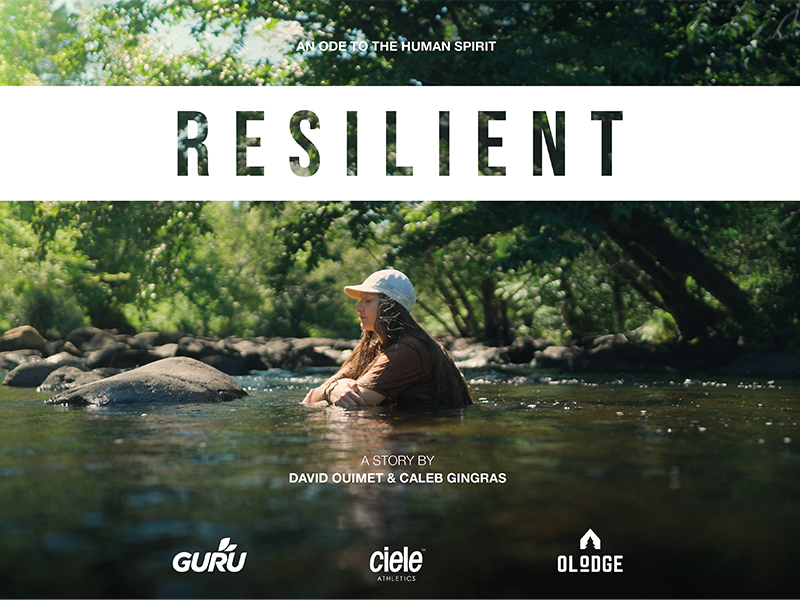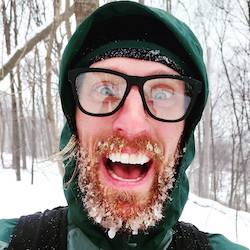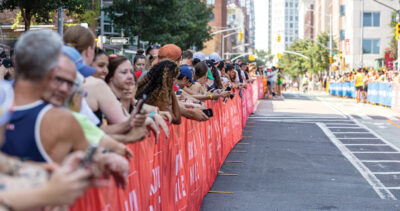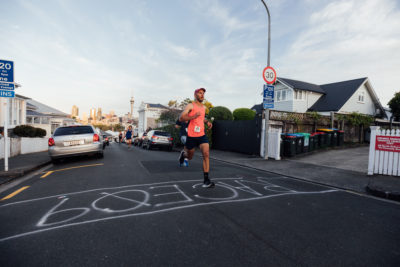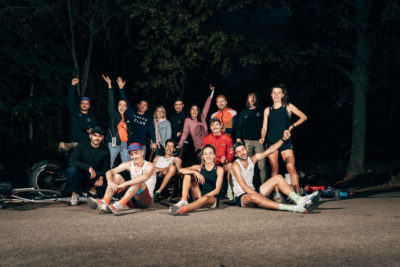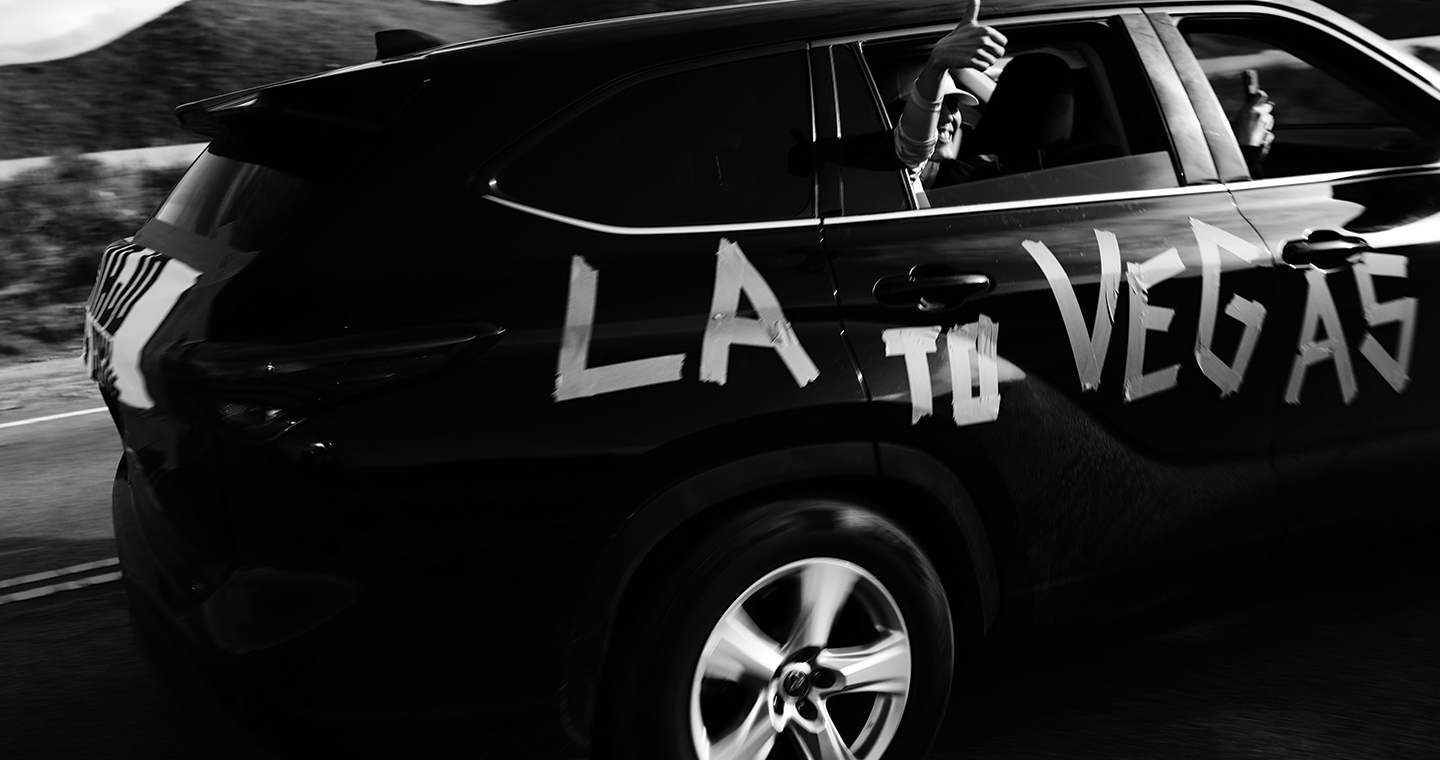
part of the journey
part of the journey
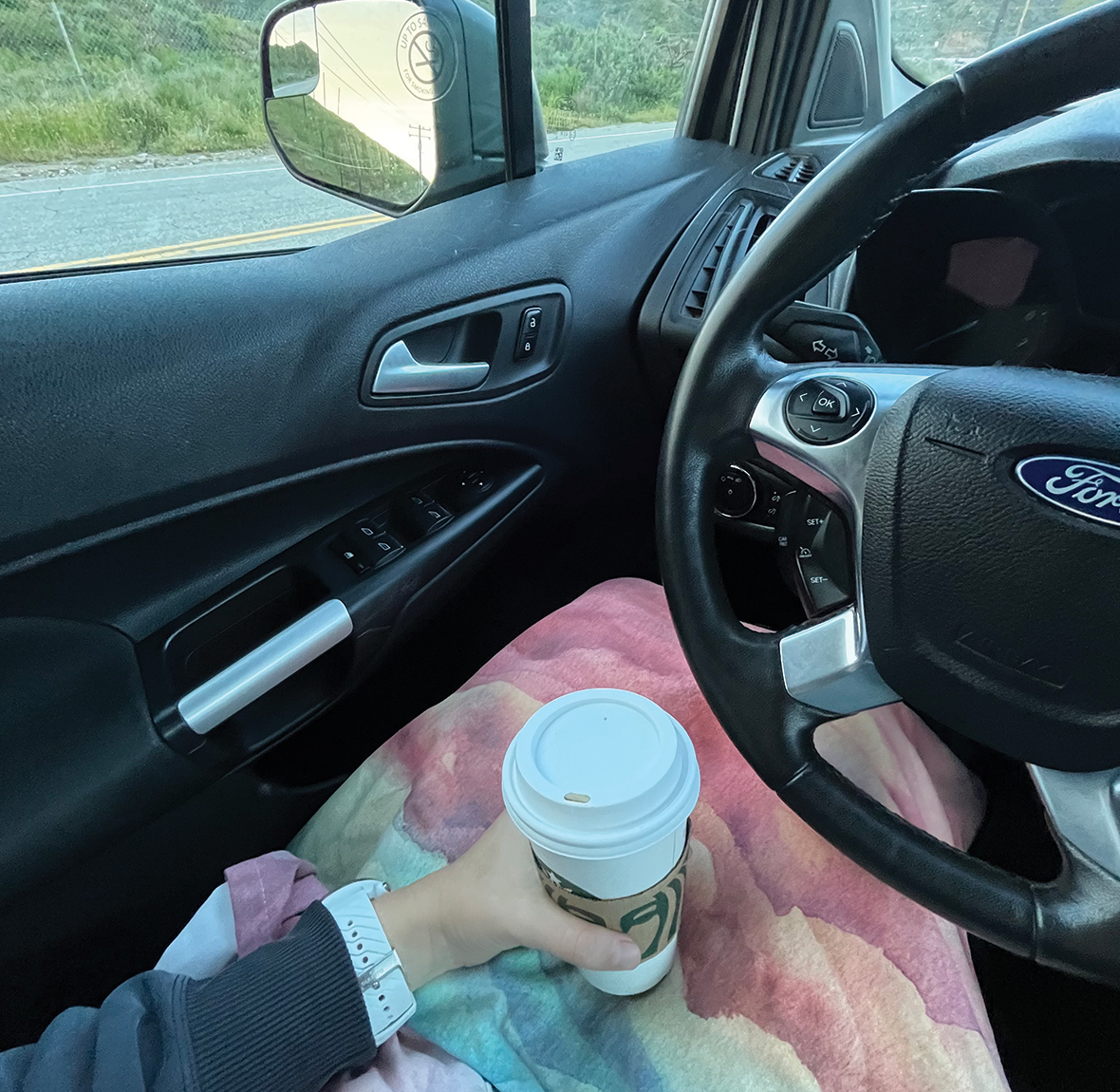
words x
paul lott
photos x
alexandra côté-durrer
Now that the dust has settled and premonitions of power lines have faded in the rear view mirror, I had a chance to sit down with a content creator recipient of The Speed Project x Ciele Athletic’s LALV GRANT, Alexandra Côté-Durrer, to discuss her experience as a photographer during this year’s race from Santa Monica to Las Vegas. Not only is Alex an accomplished photographer and endurance athlete, she’s also a strong and vocal advocate for mental health awareness who is no stranger to sharing her story about living with anxiety and depression. I wanted to take the opportunity to dig into some of the lessons Alex gained by spending time alone in the desert as well as by interacting with the teams of runners she encountered along the way.
1. Can you tell us a little bit about your creative goals and strategies for capturing TSP?
For TSP I wanted to do something a little more creative than just photographing runners. As a photographer and creative writer, I had this idea to shoot some timeless images that well represented the race, followed by poems I wrote in the moment in which I edited after. The series will be of eight images and eight correlating poems.
1. Can you tell us a little bit about your creative goals and strategies for capturing TSP?
For TSP I wanted to do something a little more creative than just photographing runners. As a photographer and creative writer, I had this idea to shoot some timeless images that well represented the race, followed by poems I wrote in the moment in which I edited after. The series will be of eight images and eight correlating poems.
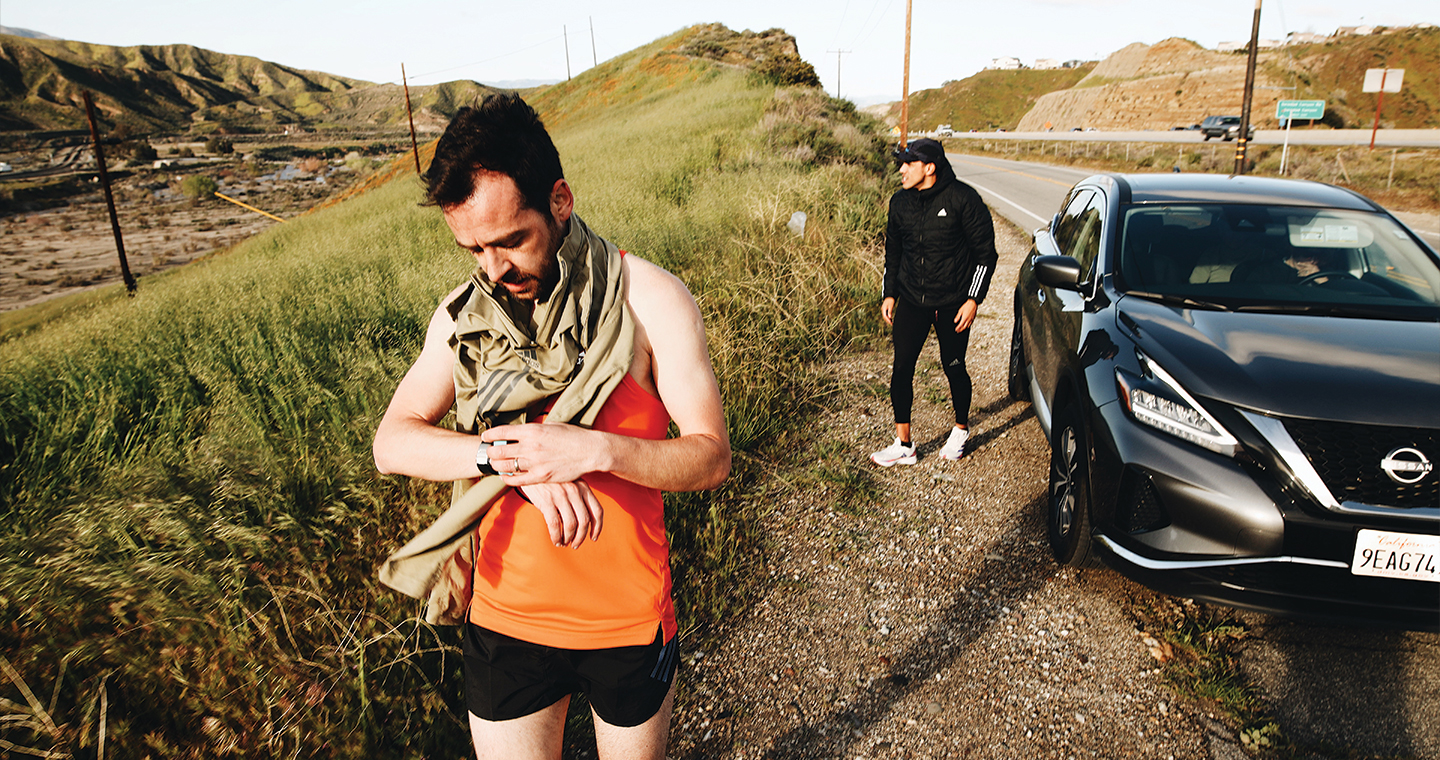
2. How did your experience in the desert differ as a photographer than for the athletes?
Were there any parallels?
Being a photographer was an ultra in itself. Because I was reliant to only myself, I felt as if I was running the whole journey on my own. Four hour sleeping breaks, spending the day walking around to get different angles, hanging out with some of the crews and teams. Apart from actually running, I was living the same experiences as the runners and that’s ultimately what I wanted to achieve in order to get the right vibe in my images and poems.
3. You’re very open about your journey with anxiety. Did you find that your time in the desert exacerbated your anxiety or did it work as a force of calm?
Were there any parallels?
Being a photographer was an ultra in itself. Because I was reliant to only myself, I felt as if I was running the whole journey on my own. Four hour sleeping breaks, spending the day walking around to get different angles, hanging out with some of the crews and teams. Apart from actually running, I was living the same experiences as the runners and that’s ultimately what I wanted to achieve in order to get the right vibe in my images and poems.
3. You’re very open about your journey with anxiety. Did you find that your time in the desert exacerbated your anxiety or did it work as a force of calm?
I live with social anxiety, which means I really don’t feel well when I am in big crowds or cities. for this journey, it was actually quite a calming experience for me being in the desert alone with my dog.
Of course having my dog there really did help me feel less lonely. I think without him I would have struggled, but overall, it felt really great to be out there on my own. There was only one night when I was in the desert that scared the shit out of me because of the darkness of being in the middle of nowhere. The anxiety mostly came prior to TSP when I spent the week in LA. I was very anxious about the race and was worried I was going to miss out and not do a good job photography wise. Once the race started, all my anxiety went away because I was capturing great images and everything seemed to be going really well.
4. Were there any moments that you found particularly stressful or even scary? What were some of your coping mechanisms for those stress-inducing experiences?
what I love about adventures is that there are always moments that scare the shit out of you.
That’s what makes it an adventure. From those experiences, you learn how to cope and how to prepare for the next scary moments. For my part, most of the stress came during the week prior to the race while I was in LA. I rented a campervan for 10 days, and only realized after I arrived in LA how complicated it actually is to sleep in a camper van in the city. I Google mapped a Walmart and my GPS unfortunately brought me to a really sketchy neighborhood somewhere in LA on a dead end street. At 8 pm and no Walmart in sight, I was exhausted and a bit scared because I knew it was definitely not safe to stay where I was.
Luckily, a local showed me out and onto the main road and told me, “You can’t get lost in this area or you’re going to get jumped!’’ His words got me super agitated and I drove as fast as I could to find somewhere that was a bit safer. Looking back, I’m sure it wasn’t that intense or that dangerous of a place. But in my mind, because I was already so anxious and exhausted, it made the situation way more scary than it actually was. I found my way to the beach and went for a walk to calm myself down. From there, I rationalized my thinking to find a safe spot to sleep.
Another scary situation was on a long 20k run I did right before the race. I was running in a beautiful nature reserve near Calabasas and 4k in my run, I heard twenty or more coyotes howling. I have come into contact with many wild animals, but at that moment, hearing so many at once was pretty scary and I didn’t know if I should turn around or keep going. I decided to keep going and about 30 minutes later, I stopped hearing them and felt better. I think what’s important to remember in those moments is that you need to trust your gut.
Luckily, a local showed me out and onto the main road and told me, “You can’t get lost in this area or you’re going to get jumped!’’ His words got me super agitated and I drove as fast as I could to find somewhere that was a bit safer. Looking back, I’m sure it wasn’t that intense or that dangerous of a place. But in my mind, because I was already so anxious and exhausted, it made the situation way more scary than it actually was. I found my way to the beach and went for a walk to calm myself down. From there, I rationalized my thinking to find a safe spot to sleep.
Another scary situation was on a long 20k run I did right before the race. I was running in a beautiful nature reserve near Calabasas and 4k in my run, I heard twenty or more coyotes howling. I have come into contact with many wild animals, but at that moment, hearing so many at once was pretty scary and I didn’t know if I should turn around or keep going. I decided to keep going and about 30 minutes later, I stopped hearing them and felt better. I think what’s important to remember in those moments is that you need to trust your gut.
if you feel as if you need to get out, get out. if you feel like you can keep going, keep going but be very vigilant.
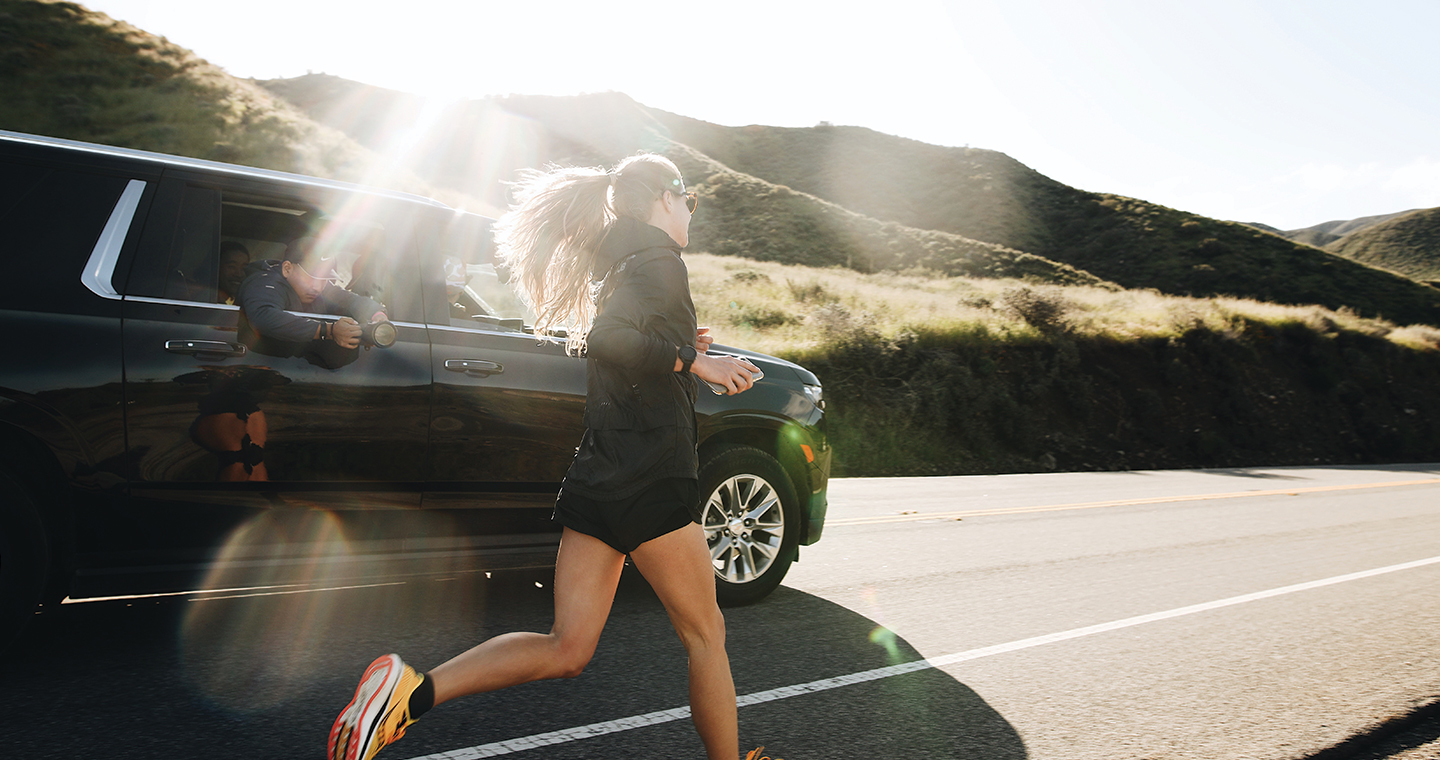
5. Beyond capturing the beauty of the landscape and the physical act of running, were there any standout moments you witnessed that really embodied the experience of TSP? Were there any particular moments of elation or clarity that you had personally, or witnessed in others, that made you think, this is why I love what I do?
What I loved the most was spending time with the different teams and various runners while witnessing them do something so crazy. There was one particular moment when the Q’s, an all-women’s team from Montreal, had a really long and rough segment though the desert and their runner arrived crying. She dropped to the ground and her team came together in a moving mishmash of emotions. These kinds of adventures really pull at our heart and mental strings.
What I loved the most was spending time with the different teams and various runners while witnessing them do something so crazy. There was one particular moment when the Q’s, an all-women’s team from Montreal, had a really long and rough segment though the desert and their runner arrived crying. She dropped to the ground and her team came together in a moving mishmash of emotions. These kinds of adventures really pull at our heart and mental strings.
when people come together to support each other like this, that’s when you see true friendship and sportsmanship surface.
Another cool moment was during the first day where the organizers set up a desert party in the middle of nowhere. They had a DJ, polar dip pools, tie dyeing, and a ton of food. It was pretty cool to see and to be part of.
6. Tell us a bit about the emotional landscape of the race. Not only the highs and lows you saw in the runners, but also for yourself. How does witnessing and experiencing these wild fluctuations of emotions carry over into your everyday life, especially as someone who lives with anxiety?
When it comes to races, especially long ultras like this, emotional moments are part of the journey. For the runners, it was cool to witness the waves of highs and lows. The first day was definitely high in stoke, as everyone where together and enjoying the beautiful day racing through the city and into the mountains and deserts. The night was a huge low and I remember in the middle of the night stopping at a gas station and talking to some of the runners and crew about how terrible it was going. They had already been chased by wild dogs, got hopelessly lost, and had started to succumb to the cold. When dawn broke, you could see most runners were feeling totally devastated and exhausted, but collectively together and actively supporting each other.
When it comes to races, especially long ultras like this, emotional moments are part of the journey. For the runners, it was cool to witness the waves of highs and lows. The first day was definitely high in stoke, as everyone where together and enjoying the beautiful day racing through the city and into the mountains and deserts. The night was a huge low and I remember in the middle of the night stopping at a gas station and talking to some of the runners and crew about how terrible it was going. They had already been chased by wild dogs, got hopelessly lost, and had started to succumb to the cold. When dawn broke, you could see most runners were feeling totally devastated and exhausted, but collectively together and actively supporting each other.
On my part, the first day was full of hype where I was trying to get the most images as possible all while taking care of myself. I think the real only down moment for me was the last day when I was really exhausted and gross and just really wanted to get to the hotel to take a shower.
7. In your opinion, what makes TSP a safe space for individuals who may not feel like they fit the mold of a stereotypical runner or struggle to visualize themselves in a traditional race setting?
Thursday, the day prior to the start of TSP, we had a pre race meeting with Nils. He explained why he started TSP and it was principally because he didn’t fit the mold of a stereotypical runner or racer. His vision was to create a wild and crazy unsanctioned race that most people would think is ridiculous. That had no real rules to just gather a bunch of people who were always the odd ones out and run from LA to LV. And that is exactly how it was. This project is really one of a kind that literally anyone can do and have so much fun doing it. It felt like a big family coming together to help each other push their personal boundaries.
8. How do these kinds of experiences act as a learning tool for those who choose to participate, whether they participate as an athlete, a photographer, or even a volunteer? On a personal level, what are some of the lessons or takeaways you’ve gained from this experience?
As an ultra runner, I think it’s so important to get involved not just in running races, but also to volunteer and crew, as well. The running community is so great, and when you help out in different roles during a race, you learn a lot about yourself and teamwork and can bring those learnings to your next race as a runner. It also makes you appreciate the culture even more. To me, I love running, but I also love photography and helping out where help is needed.
7. In your opinion, what makes TSP a safe space for individuals who may not feel like they fit the mold of a stereotypical runner or struggle to visualize themselves in a traditional race setting?
Thursday, the day prior to the start of TSP, we had a pre race meeting with Nils. He explained why he started TSP and it was principally because he didn’t fit the mold of a stereotypical runner or racer. His vision was to create a wild and crazy unsanctioned race that most people would think is ridiculous. That had no real rules to just gather a bunch of people who were always the odd ones out and run from LA to LV. And that is exactly how it was. This project is really one of a kind that literally anyone can do and have so much fun doing it. It felt like a big family coming together to help each other push their personal boundaries.
8. How do these kinds of experiences act as a learning tool for those who choose to participate, whether they participate as an athlete, a photographer, or even a volunteer? On a personal level, what are some of the lessons or takeaways you’ve gained from this experience?
As an ultra runner, I think it’s so important to get involved not just in running races, but also to volunteer and crew, as well. The running community is so great, and when you help out in different roles during a race, you learn a lot about yourself and teamwork and can bring those learnings to your next race as a runner. It also makes you appreciate the culture even more. To me, I love running, but I also love photography and helping out where help is needed.
you can be part of the experience and not even need to run a mile.
I definitely recommend anyone who wants to go to races to do some volunteering in order to appreciate the sport more.
9. Do you have any plans for participating in TSP next year?
I would love to participate in TSP next year but it is not official if I am going or not. TSP is such an awesome experience and I would love to go but it is also quite expensive to do so and it will depend on my financial situation and if opportunities turn up. A part of me would love to run it, but another part of me would love to go back and be a photographer again. We will see, but I am definitely crossing my fingers that I’ll have the opportunity to get out in the desert again soon.
9. Do you have any plans for participating in TSP next year?
I would love to participate in TSP next year but it is not official if I am going or not. TSP is such an awesome experience and I would love to go but it is also quite expensive to do so and it will depend on my financial situation and if opportunities turn up. A part of me would love to run it, but another part of me would love to go back and be a photographer again. We will see, but I am definitely crossing my fingers that I’ll have the opportunity to get out in the desert again soon.

Alex was the first creator recipient of the LALV GRANT, which aims to expand access to the experience of TSP for teams, solo runners and creators. The month that this journal story is published is also suicide awareness month. A film – Resilient – produced by Caleb Gingras and David Ouimet, was recently released that dives into the story and life of Alex. It hopes to empower our communities to better understand and identify with those who are struggling with their mental health. The film will be screened at espace | MTL, and can also be viewed below.
more articles


